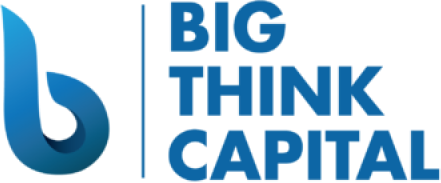Navigating the Impact of Recent Fed Interest Rate Decisions on Your Small Business: A Comprehensive Guide on Working Capital Optimization
Estimated Reading Time: 6 minutes
- Understanding the role of the Federal Reserve in interest rate decisions.
- Strategies for optimizing working capital amidst rising interest rates.
- Insights into how recent trends affect small businesses.
- Leveraging financial products for effective cash flow management.
Table of Contents
- Understanding the Federal Reserve’s Monetary Policy
- Recent Trends in Interest Rates
- The Impact on Small Businesses
- Strategies for Working Capital Optimization
- Leveraging Financial Products through Big Think Capital
- Conclusion
- FAQ
Understanding the Federal Reserve’s Monetary Policy
The Federal Reserve, or the Fed, plays a pivotal role in shaping the economic outlook of the United States by adjusting interest rates to control inflation and stimulate growth. Recent adjustments to the federal funds rate are designed to combat inflationary pressures that have surged in recent years. For small business owners, these interest rate changes can significantly impact funding choices.
Key Objectives of the Fed’s Interest Rate Decisions
- Combat Inflation: Higher interest rates are often employed to curb inflation, which affects the purchasing power of consumers and businesses alike.
- Stimulate Economic Growth: Conversely, lower rates aim to encourage borrowing and investment, driving economic growth.
- Stabilize the Economy: The Fed continually assesses various economic indicators to keep growth steady while managing inflation.
Recent Trends in Interest Rates
As of early 2025, the Federal Reserve has made consistent moves to increase interest rates to address ongoing inflation concerns. In late 2023, the Fed’s interest rate spiked to its highest level since 2001, causing significant shifts in how businesses approach financing. Understanding how these changes ripple through the economy is essential for strategizing your financial approach.
- Current Federal Funds Rate: As of February 2025, the current federal funds rate stands at 5.25%, a noticeable increase compared to 0.25% in 2021 (Source: Federal Reserve).
- Predictions for the Future: Experts anticipate that rates may stabilize or even see minor adjustments as the Fed evaluates inflation data throughout 2025 (Source: Bloomberg).
The Impact on Small Businesses
The repercussions of increased interest rates can be profound for small businesses, affecting everything from operational costs to investment opportunities. Here are some key impacts to consider:
- Cost of Borrowing: Higher interest rates make borrowing more expensive. This can lead to increased monthly payments and a re-evaluation of the types of loans you might pursue.
- Cash Flow Management: As the cost of capital rises, managing cash flow effectively becomes more critical. Businesses must ensure they have enough liquidity to cover operational expenses.
- Investment Decisions: Higher rates can deter businesses from pursuing new projects or expanding operations due to perceived risk and cost.
Strategies for Working Capital Optimization
To effectively navigate the changing landscape, small business owners must deploy strategic measures to optimize their working capital. Here are three practical takeaways to help you manage working capital in light of rising interest rates.
1. Reassess Your Funding Needs
Conduct a thorough assessment of your current and future funding requirements. Understanding your financial landscape will help you determine the most suitable funding options. Options include:
- Working Capital Advances: If you need immediate cash flow, consider a working capital advance. This option allows for quick access to funds, helping you cover daily operational costs.
- SBA Loans: While interest rates are higher, SBA loans typically offer favorable terms for small businesses. They can be an excellent choice for long-term investments, especially if you are looking to maintain lower monthly payments.
- Lines of Credit: Establishing a line of credit can help manage short-term cash flow gaps without bearing the cost of a full loan. This flexibility is crucial in a fluctuating economy.
2. Cut Unnecessary Expenses
In times of tighter cash flow, it’s important to scrutinize expenses. Look for areas where costs can be reduced without compromising service or product quality. Here are a few strategies:
- Review Supplier Contracts: Negotiate better terms with suppliers or explore alternative vendors that may offer more competitive pricing.
- Embrace Technology: Implementing new technology can streamline processes and reduce operational costs over time.
- Consider Outsourcing: For non-core functions, outsourcing can decrease labor costs while allowing your team to focus on core business functions.
3. Enhance Cash Flow Management
Efficient cash flow management is essential for enduring a period of high interest rates. To enhance your cash flow processes:
- Invoice Promptly: Ensure that invoices are sent promptly upon service or product delivery. Consider offering discounts for early payments to encourage quicker collection.
- Monitor Cash Flow Regularly: Use cash flow reports to track income and outgoings. Identifying trends will help you anticipate periods of cash deficit.
- Forecast Cash Needs: Regularly forecasting your cash flow needs allows for proactive adjustments, ensuring you are prepared for financial fluctuations.
Leveraging Financial Products through Big Think Capital
As a small business owner navigating the current economic climate, utilizing the right financial products can support your working capital optimization strategy. At Big Think Capital, we specialize in understanding the unique challenges faced by small businesses and can offer tailored financial solutions that suit your specific needs.
- Flexible Funding Options: Whether you require a working capital advance, line of credit, or SBA loan, our team can help you explore the right funding opportunities to optimize your ability to respond to market changes.
- Expert Guidance: Our funding experts are well-versed in the nuances of different financial products and can guide you in finding the best fit for your business requirements.
Conclusion
In an environment characterized by rising interest rates, small businesses must adapt their financing strategies to ensure stability and growth. By understanding the Fed’s monetary policy, recognizing the impacts on your business, and implementing effective working capital optimization strategies, you can navigate these challenges successfully.
Whether you’re exploring immediate funding needs or planning long-term financial strategies, Big Think Capital is here to help. Visit our website at bigthinkcapital.com to learn more about how we can assist you in securing the necessary funding for your business or speak with one of our funding experts today. Empower your small business to thrive in a changing financial landscape.
FAQ
Q: How do rising interest rates affect small businesses?
A: Rising interest rates increase the cost of borrowing, which can lead to higher operational costs and impact investment decisions.
Q: What strategies can small businesses implement to optimize working capital?
A: Small businesses can reassess funding needs, cut unnecessary expenses, and enhance cash flow management to optimize working capital.
Q: Where can I find financial products to support my business?
A: Big Think Capital offers various funding options tailored to meet the specific needs of small businesses.






